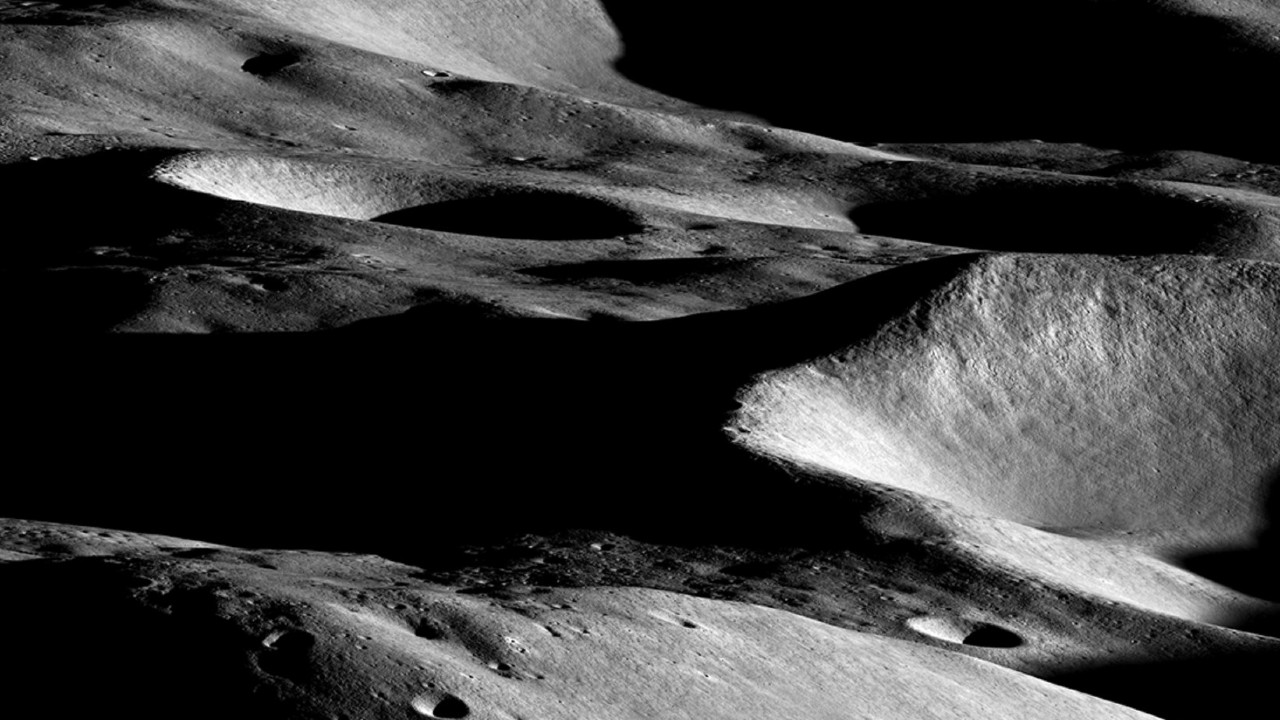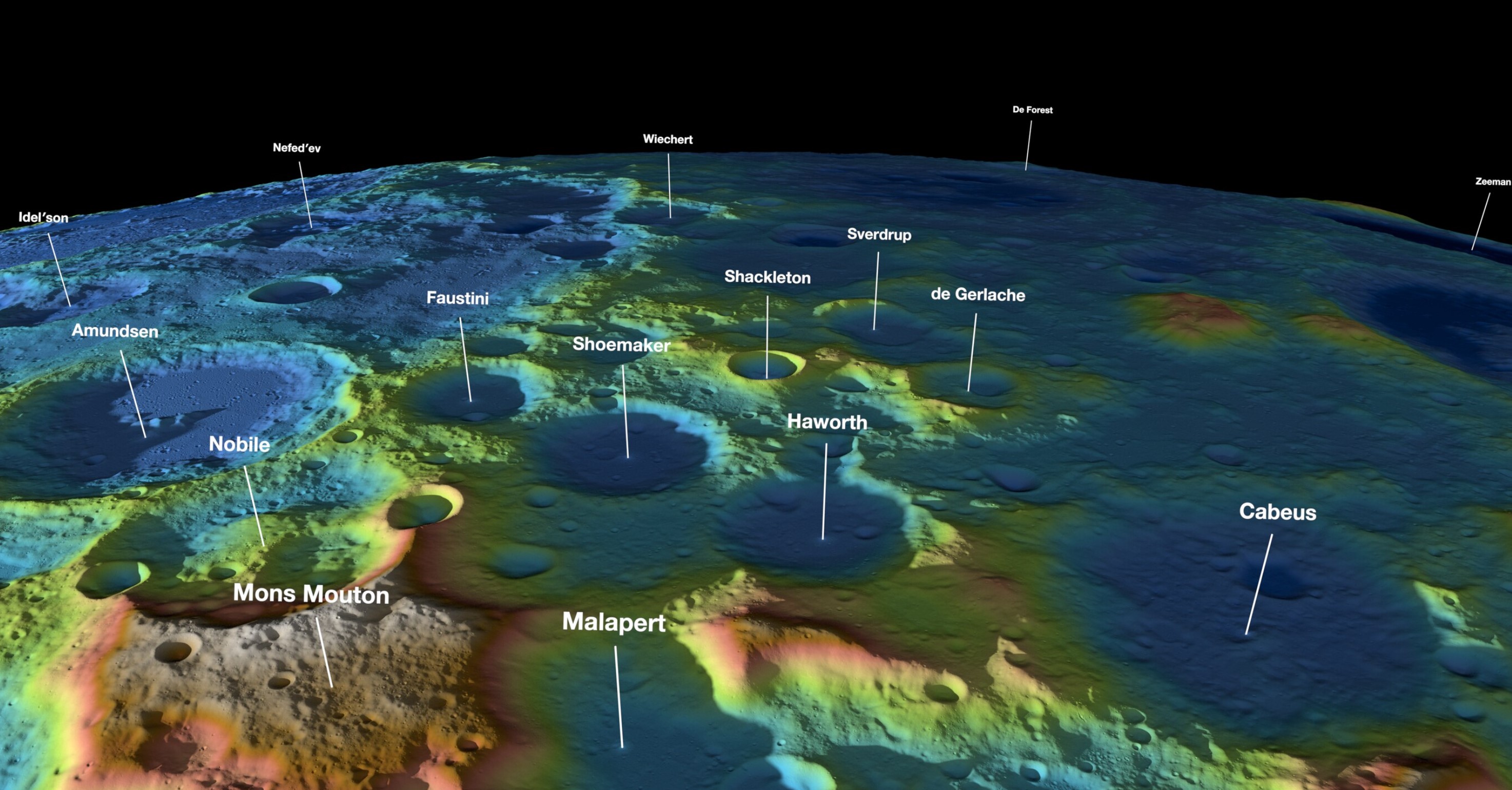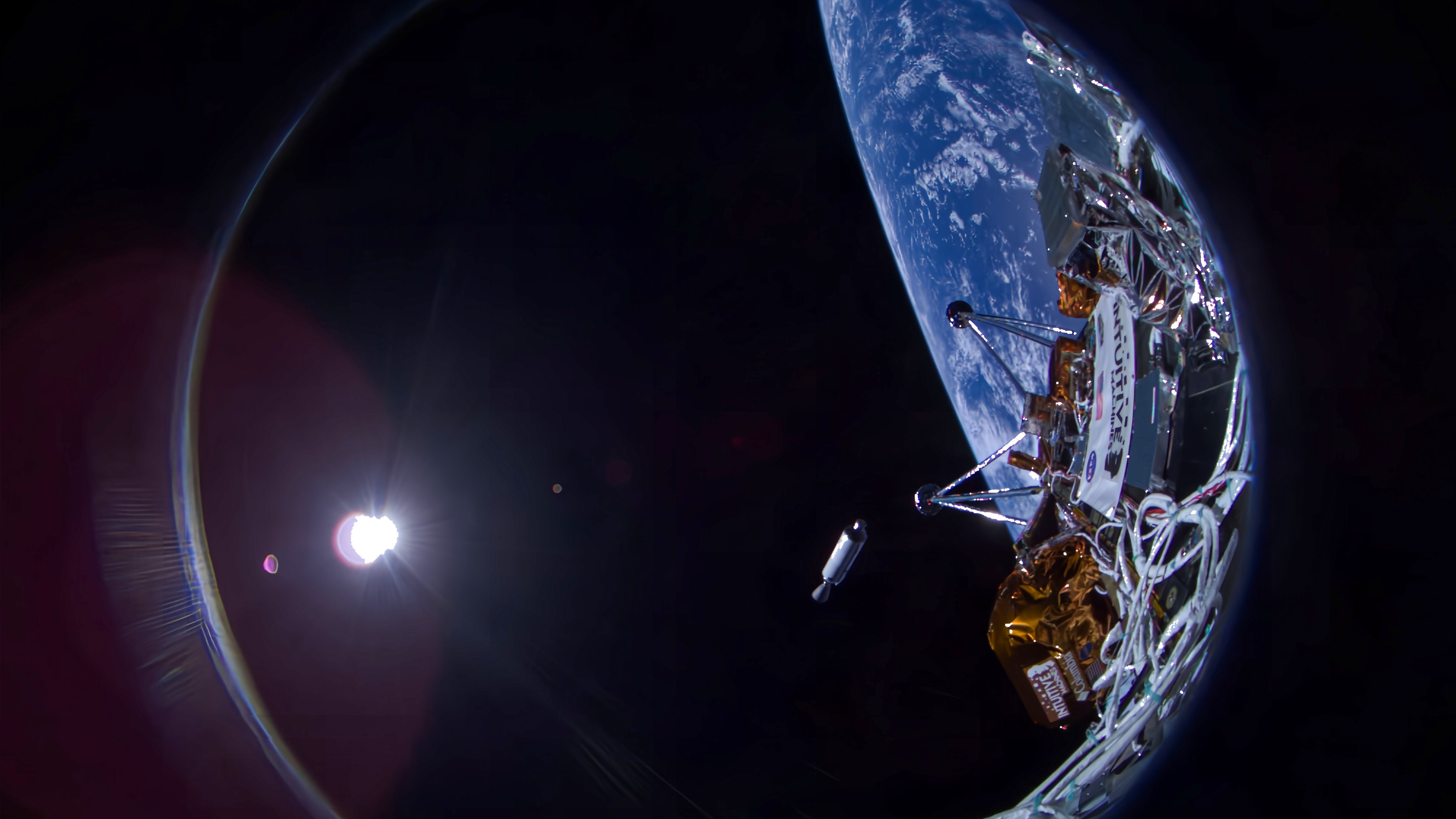Intuitive Machines' Odysseus lander is aiming for a crater near the moon's south pole. Here's why
A site near the moon's Malapert A crater offers an opportunity to better manage risks for future lunar landings.

Intuitive Machines' Odysseus mission is targeting touch down near the moon's south pole this week for a historic lunar landing.
The Nova-C lunar lander, named Odysseus, was built by the Houston-based company Intuitive Machines and launched to the moon atop a SpaceX Falcon 9 rocket on Feb. 15 from NASA's Kennedy Space Center in Florida. The mission, known as IM-1, is scheduled to touchdown on the moon on Thursday (Feb. 22), at 5:49 p.m. EST (2249 GMT) in a region near the lunar south pole. If all goes according to plan, Intuitive Machines will be the first private company to reach the moon, and a successful descent will mark the first American soft lunar landing in over 50 years.
Odysseus is carrying six NASA instruments and will attempt its historic landing near Malapert A, a small impact crater about 190 miles (300 kilometers) from the moon's south pole. So, why was this location selected for the IM-1 mission?
The Malapert A crater was not Odysseus' original destination. Initially, the spacecraft was slated to land in Oceanus Procellarum — the largest basaltic plain, also known as a lunar maria, located on the western edge of the visible side of the moon.
Instead, Malapert A is a relatively flat and safe region located within the heavily cratered southern highlands on the side of the moon visible from Earth, NASA officials said in a statement announcing the new landing site in May 2023.
"The decision to move from the original landing site in Oceanus Procellarum was based on a need to learn more about terrain and communications near the lunar south pole, which is expected to be one of the best locations for a sustained human presence on the moon," NASA officials said in the statement.
Breaking space news, the latest updates on rocket launches, skywatching events and more!
"Landing near Malapert A also will help mission planners understand how to communicate and send data back to Earth from a location that is low on the lunar horizon."
Although the lunar south pole is a candidate location for NASA's Artemis 3 mission — expected to land astronauts on the moon as soon as 2026 — details of the area's environment remain a mystery to astronomers. -
Therefore, landing near the Malapert A crater offers Odysseus the opportunity to better manage risks for future Artemis landings and gather data about the lunar environment throughout the region.
The IM-1 mission — a private attempt under NASA's Commercial Lunar Payload Services program, or CLPS — aims to demonstrate the lunar spacecraft's landing capabilities and scope out the area for future missions.
IM-1 is the second attempted landing of a private lander supporting the CLPS initiative. The first attempt ended prematurely when Astrobotic's Peregrine experienced a crippling a propulsion anomaly and later fell back to Earth, losing all of its payloads.

Samantha Mathewson joined Space.com as an intern in the summer of 2016. She received a B.A. in Journalism and Environmental Science at the University of New Haven, in Connecticut. Previously, her work has been published in Nature World News. When not writing or reading about science, Samantha enjoys traveling to new places and taking photos! You can follow her on Twitter @Sam_Ashley13.


